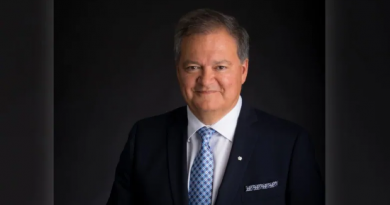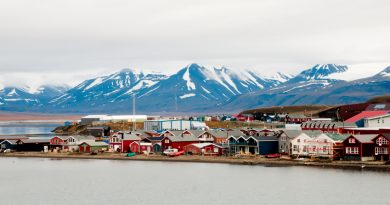Ice-capable Canadian Coast Guard ships could be both ‘a blessing and a curse’: expert
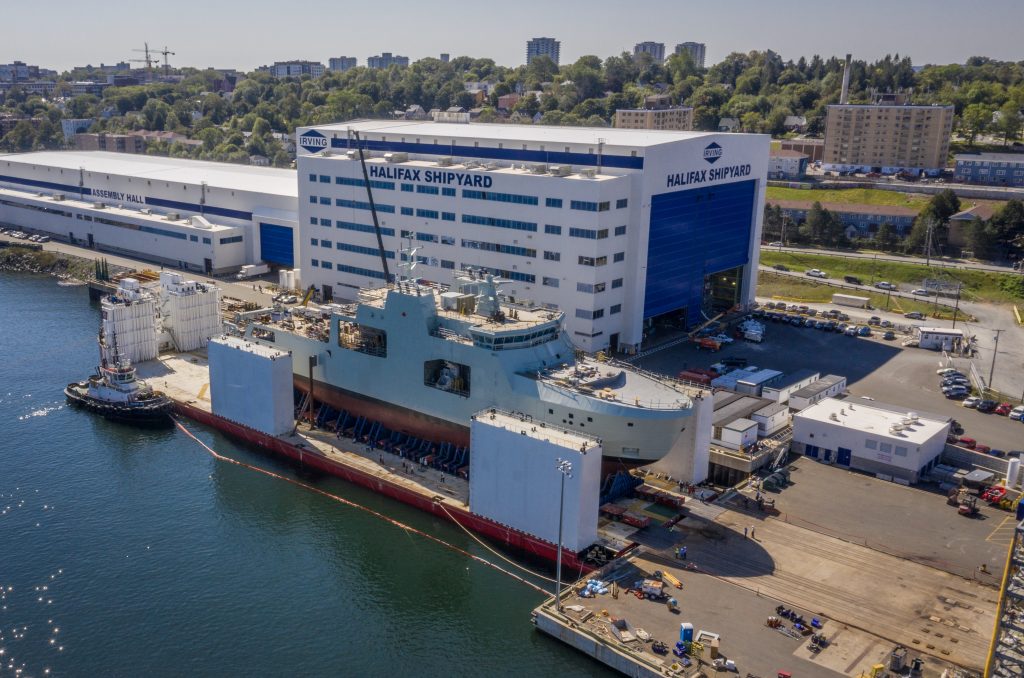
If reports that federal officials are considering equipping the Canadian Coast Guard with two ice-capable patrol ships are true, it could be both a blessing and a curse, says a Canadian expert on maritime strategy.
On the one hand, these new patrol ships would allow the coast guard to operate in greater areas along Canada’s coastline throughout longer periods of the year, said Timothy Choi, a maritime strategy expert at the University of Calgary’s Centre for Military, Security and Strategic Studies.
On the other hand, it might make it harder for coast guard officials to press the cash-strapped federal government for real icebreakers, he added.
Earlier this week, Postmedia reported that federal officials are setting the stage to award Irving Shipbuilding contracts to build two more Arctic and Offshore Patrol Ships (AOPS).
The vessels were designed for the Royal Canadian Navy but the two additional ships will be delivered to the coast guard instead, said a report by Postmedia’s defence correspondent David Pugliese, citing anonymous industry and defence sources.
Under Canada’s National Shipbuilding Strategy, Irving Shipbuilding has been awarded the contract to build six AOPS vessels, which the government says will mostly be responsible for surveillance in the Arctic, as well as Atlantic and Pacific oceans, providing the navy situational awareness, and cooperating with other agencies to enforce Canadian sovereignty in the rapidly changing northern regions.
The two additional ships for the coast guard would help Irving’s Halifax shipyard avoid layoffs during a production gap while it retools to begin construction of the next generation of Canadian warships and allow the Liberal government to head into the federal election in October claiming it was delivering on its promise to rebuild the coast guard, the report said.
‘A long-term project’
Ashley Michnowski, a spokesperson for Procurement Minister Carla Qualtrough, said in an email to Radio Canada International the National Shipbuilding Strategy (NSS) is “a long-term, made-in-Canada plan designed to meet evolving federal shipbuilding requirements.”
“Additional AOPS are currently not included in the NSS,” Michnowski wrote.
“We are managing the NSS strategically as a program and not just as individual projects the way the previous Conservative government did.”
Irving Shipbuilding did not respond to a request for comment.
A good match for the coast guard?
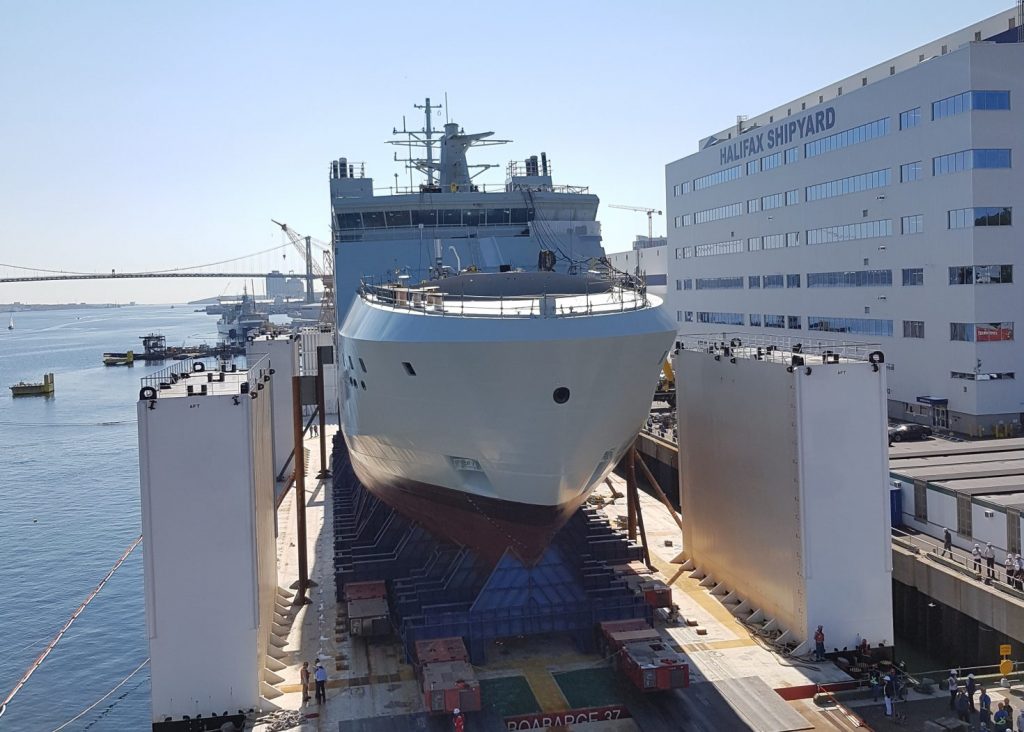
Choi said if the purchase of the two ships does indeed go through, it would be a rare case in Canadian, and indeed Western, military/paramilitary procurement where the number of equipment purchased is the same as initially promised.
“The AOPS project was, after all, initially promised to deliver six to eight such vessels, and these two Canadian Coast Guard variants would meet that promise,” Choi said.
Whether the AOPS are a good match for the coast guard, however, depends on what they are expected to do, he added.
For the coast guard, the most obvious advantage of having the two AOPS would be that its ageing fleet will receive two long-endurance, helicopter-carrying, offshore vessels much earlier than expected, Choi said.
While much of the coverage of the Canadian Coast Guard’s fleet tends to focus on its icebreakers, a significant portion of its major vessels are used for offshore patrol duties, he said.
However, work on replacements for the coast guard’s 1970s-vintage offshore patrol ships such as the CCGS Cape Roger, which played a key role in the “Turbot Wars” off Newfoundland in 1995, hasn’t even started.
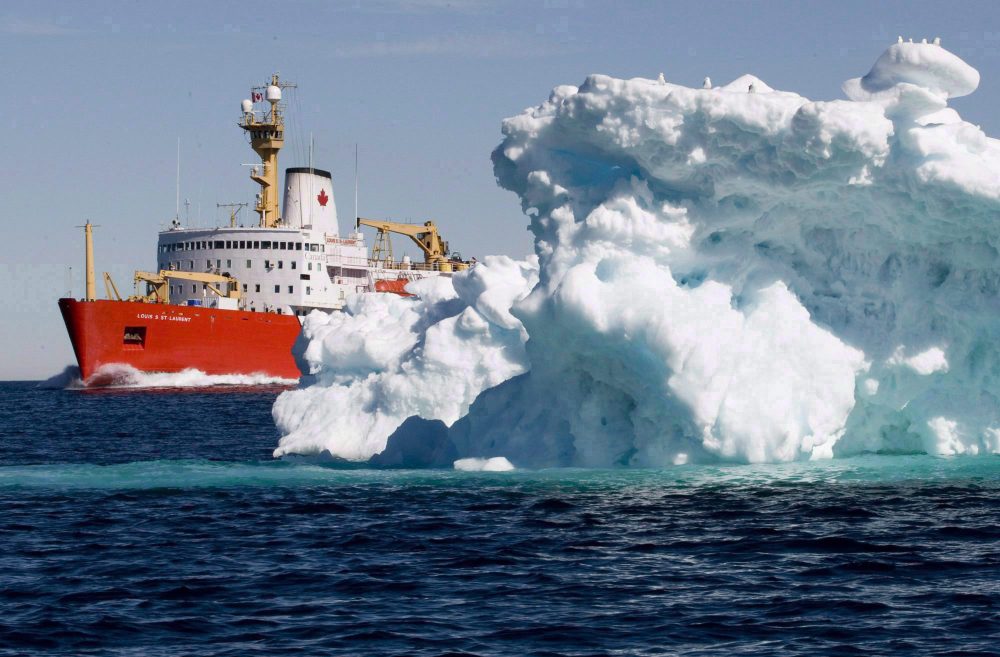
Vancouver-based shipyard Seaspan has won the contract to build large non-combat vessels for the coast guard and non-combat support ships for the Royal Canadian Navy (RCN).
Under the current production schedule, Seaspan’s Vancouver Shipyards have to first complete the two Joint Support Ships for the navy, as well as the Diefenbaker polar icebreaker, the two of the three remaining Offshore Fisheries Science Vessels (the first of three, CCGS Sir John Franklin, was launched in 2017 and is undergoing sea trials) and the Offshore Oceanographic Research Vessel for the coast guard before they move on to building new offshore patrol vessels.
“As a result, the first of the new CCG offshore patrol vessels would not likely enter service until the late 2020s if they are contracted at all – there have been no movements in that regard,” Choi said. “Whereas the two AOPS could be built at the end of the currently ‘hot’ construction line and be completed much earlier to help replace older ships like the Cape Roger and its sister Cygnus as they reach the end of their service lives.”
However, one of the biggest disadvantages of getting the AOPS is that having two ice-capable patrol ships might make it harder for the Canadian Coast Guard to justify getting new, dedicated icebreakers, Choi said.
“Being ice-capable is not the same thing as being an icebreaker, as they come with very different hull and machinery requirements: whereas the former suffices to get the ship itself through ice, the latter requires the ship to be able to break ice to the extent necessary to allow other, less well-protected, ships to transit,” Choi said.
This distinction may be lost on lawmakers and politicians, he added.
It’s not an icebreaker

“Since it’s not an icebreaking hull, the prospective AOPS 7 and 8 should not be compared with or judged on that basis: they should absolutely not be used in the ways that the CCG’s current icebreakers are,” Choi said.
“Instead, AOPS 7 and 8 should be thought more as offshore multi-mission patrol ships that can operate in ice where and when necessary.”
Choi said Canadian Coast Guard ships perform a range of duties apart from icebreaking: from fisheries patrol, environmental protection, and emergency towing, to maintenance of navigational aids.
In these matters, the large AOPS hull with its several fast boats and helicopter hangar can greatly contribute in many of the same ways that the current, ageing, fleet already does, Choi said.
“Recent clashes between Chinese distant fishing fleets and other countries’ coast guards suggest that maritime surveillance and enforcement will become increasingly vital in the near future, and having a greater offshore presence – whether through the RCN or CCG – would strengthen Canada’s control over its maritime resources,” Choi said.
“The CCG fleet played a central part in the mid-1990s ‘Turbot Wars’ to legitimizing our claim over offshore fisheries, and it is possible such a role may well be demanded once again.”
Some experts have noted that AOPS may not be fast enough for fisheries patrol duties, though the ships they would replace, the Cape Roger and Cygnus, are only a knot faster and that is without accounting for their greater age that might reduce their actual top speed, Choi said.
“In any case, the AOPS benefits from having the much faster helicopter and room for fast boats that can make up for the platform’s moderate speed: a combination used by the Norwegian and United States coast guards, for example, who rarely depend on their ships to chase down violators and instead employ tactics that leverage their helicopter and fast boats,” Choi said.
It’s also unclear what would be involved in redesigning and “demilitarizing” the AOPS for the coast guard’s needs, he added.
Economies of scale
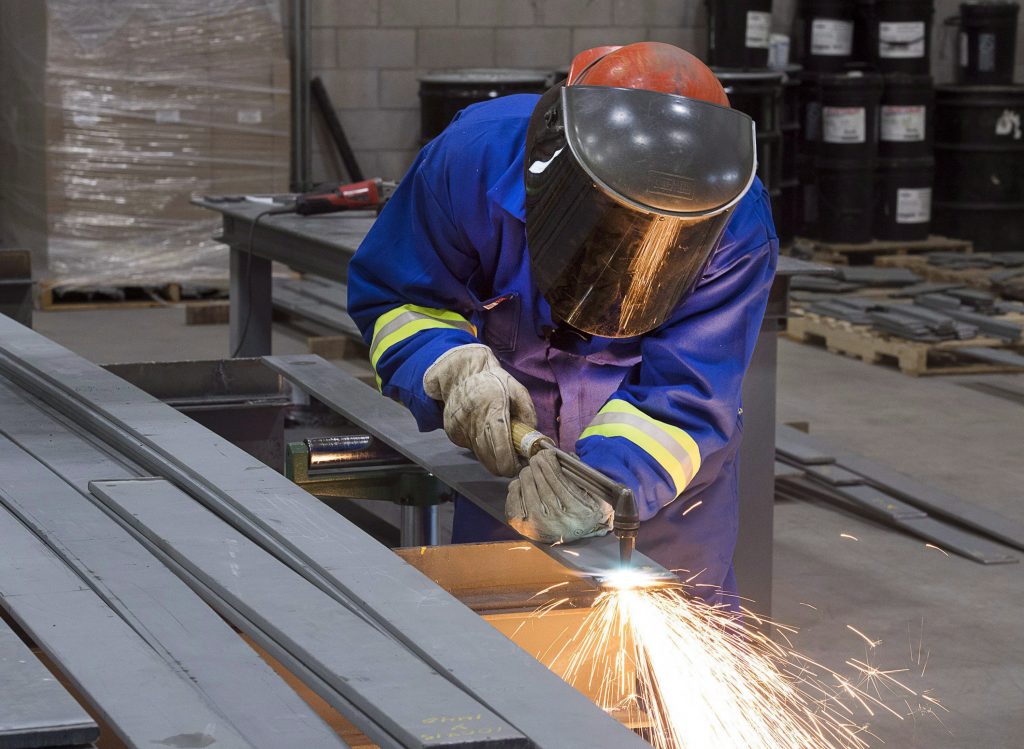
For Canada’s shipbuilding strategy, the advantage of adding two extra AOPS orders is that it may well help offset the initial extra cost of building the sixth patrol ship, Choi said.
One of the major goals of the NSS when it was introduced by the previous Conservative government in 2010, was to provide Canada’s shipyards with continuous work, allowing them to preserve precious technical know-how and keep thousands of qualified workers employed between contracts.
However, both Seaspan and the Halifax-based Irving Shipbuilding have warned that they are facing layoffs because of gaps in ship building schedules.
Irving, which won the NSS contract to build the AOPS and the future Surface Combatant Ships that will replace the current fleet of Halifax-class frigates, has warned that it will have to lay off workers because of a gap between the two massive projects.
To stave off the expected layoffs, the federal announced in November that it would order a sixth AOPS, but at nearly $800 million this ship was expected cost almost twice as much as its predecessors.
However, adding two more ships to the production queue means that the shipyard no longer needs to artificially extend the construction time for the sixth AOPS.
“The amount of time required to build AOPS 7 and 8 should be more than enough to span the gap until the Canadian Surface Combatants can be built, eliminating the need to pay the shipyard to artificially extend any of the AOPS’ construction times or to retain idle workers,” Choi said. “In sum, the logic of it may be, ‘If we’re paying double for AOPS 6, why don’t we just use the extra cost to help pay for a seventh and eight ship, and also skip the whole workforce retention issue?’”
No effect on icebreaker program
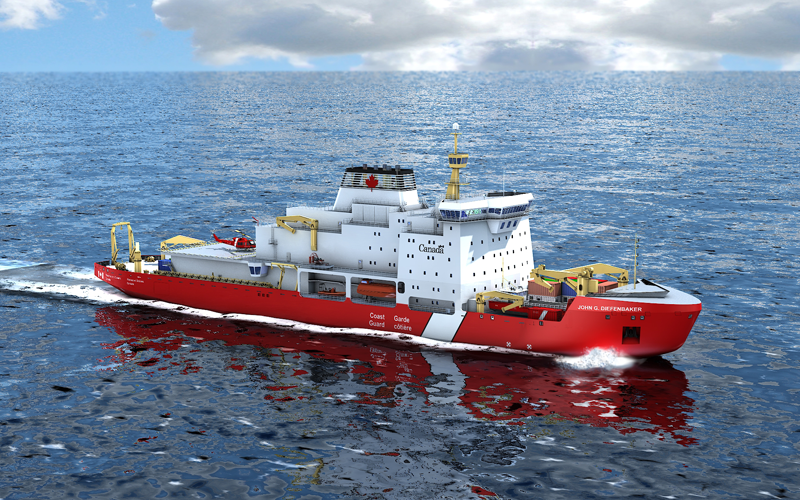
Choi said he doesn’t expect the possible acquisition of AOPS by the coast guard to have an effect on the icebreaker replacement program.
“It seems highly unlikely that AOPS 7 and 8 would be sold to the CCG as replacements for any of the current icebreakers – it would be a major mistake if they were and the CCG would not likely stand for it,” Choi said.
“The Diefenbaker polar icebreaker will still have to be built, and the ongoing conversion by Davie Shipbuilding of the three second-hand medium icebreakers will continue.”
Colin Cooke, president & CEO of the Canadian Marine Industries and Shipbuilding Association, said his membership “is fully supportive of opportunities that see new ships built in Canada” but would like to see the NSS spread the contracts to other shipyards as well.
“As we have seen over the last 10 years of the NSS, Canadian shipyards are more than ready and willing to step up and invest in the infrastructure necessary to meet Canadian national needs,” Cooke said in an email.
“We would like to see the government move faster in addressing the capacity gaps. Added production capacity and quicker turn-around times on decision-making will improve the delivery of much needed capability.”
Related stories from around the North:
Canada: The Arctic shipping route no one is talking about, Cryopolitics Blog
China: Details of China’s nuclear-powered icebreaker revealed, The Independent Barents Observer
Finland: Authorities in Arctic Finland plan zones for controversial rail line, Yle News
Russia: Russia, China step up talks over Arctic shipping, The Independent Barents Observer
Sweden: Local shipping generates more emissions than domestic flights
United States: U.S. must pay attention to growing China-Russia alliance in Arctic: expert, Alaska Public Media

